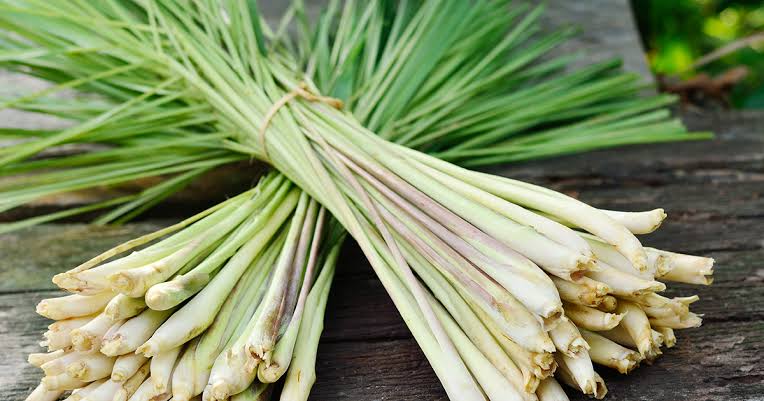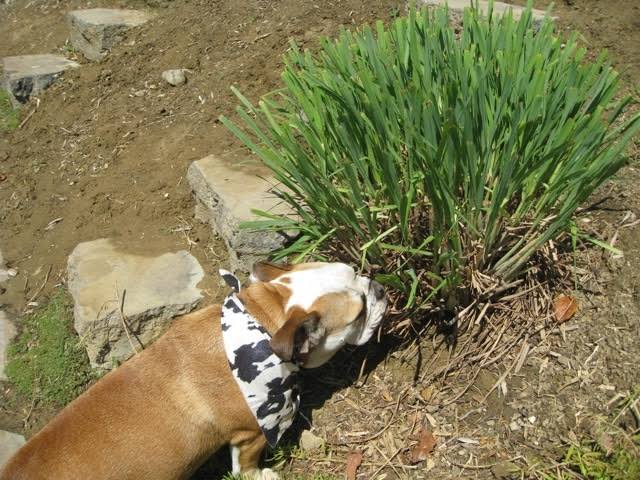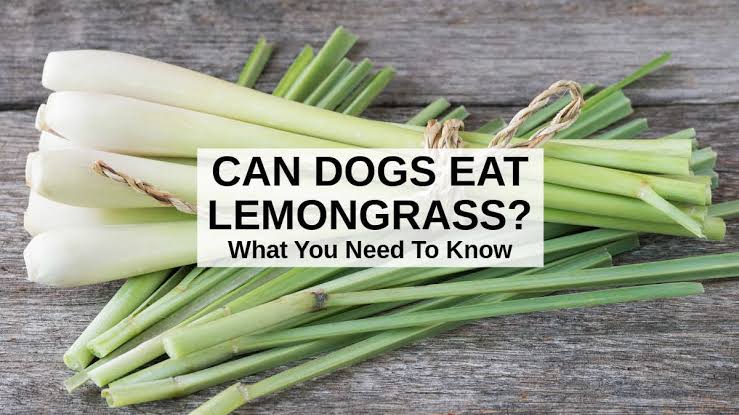In this comprehensive guide, we will look to answer the question “Is Lemongrass Safe For Dogs?”. As pet owners, we strive to ensure the safety and well-being of our canine companions, which often leads us to question the safety of various foods and ingredients. To aid us with this article, we will discuss about; Understanding Lemongrass, Potential Benefits Of Lemongrass For Dogs, Risks And Considerations Of Lemon Grass For Dogs, How To Safely Introduce Lemongrass To Your Dog, etc.
Lemongrass, with its refreshing aroma and culinary uses, is one such ingredient that prompts inquiries from dog owners. Exploring the safety of lemongrass for dogs is essential for informed decision-making when it comes to our pets’ diets.
Join us as we investigate the potential risks and benefits of feeding lemongrass to dogs, explore ways to safely incorporate it into their diet, and provide guidance on what to do if you suspect your dog has consumed lemongrass or experienced any adverse reactions. Let’s unravel the mysteries surrounding lemongrass and its suitability for our beloved canine companions.
Recommended: Bark Collar For Large Dogs

Understanding Lemongrass
Lemongrass, scientifically known as Cymbopogon citratus, is a perennial plant that belongs to the grass family. It is native to tropical regions such as Southeast Asia, India, and Africa but is now cultivated in many parts of the world for its culinary and medicinal properties.
Description Of Lemongrass Plant
Lemongrass is characterized by its tall, slender stalks and long, thin leaves. The plant can grow up to six feet in height and has a distinct lemony aroma, which is where it gets its name from. The leaves are green, linear, and taper to a point, while the stalks are fibrous and have a tough outer layer. Lemongrass produces clusters of small, greenish-white flowers, but it is primarily grown for its stalks and leaves, which are used in cooking and herbal preparations.
Common Uses Of Lemongrass In Human Cuisine
Lemongrass is a staple ingredient in many cuisines around the world, particularly in Southeast Asian dishes. It is prized for its citrusy flavor and aroma, which adds a refreshing and tangy element to savory dishes. Common uses of lemongrass in human cuisine include:
- Soups and Curries: Lemongrass is often used to flavor soups, stews, and curries, imparting a bright, citrusy note to the dish. It is typically added whole to the cooking liquid and removed before serving.
- Marinades and Sauces: Lemongrass is a popular ingredient in marinades and sauces for grilled meats, seafood, and vegetables. Its aromatic flavor enhances the overall taste of the dish and pairs well with other herbs and spices.
- Teas and Beverages: Lemongrass tea is a refreshing and aromatic beverage enjoyed for its soothing properties and citrusy flavor. It can be enjoyed hot or cold and is often infused with other herbs or spices for added complexity.
Common Uses Of Lemongrass In Alternative Medicine
In addition to its culinary uses, lemongrass has a long history of use in traditional medicine for its purported health benefits. While scientific research on the medicinal properties of lemongrass is ongoing, it is commonly used in alternative medicine practices for the following purposes:
- Digestive Health: Lemongrass is believed to have digestive properties and may help alleviate symptoms of indigestion, bloating, and gas. It is often consumed as a tea or included in herbal remedies for gastrointestinal issues.
- Relaxation and Stress Relief: The aroma of lemongrass is said to have calming and relaxing effects on the mind and body. Lemongrass essential oil is commonly used in aromatherapy to promote relaxation and reduce stress and anxiety.
- Anti-inflammatory and Antioxidant Properties: Lemongrass contains compounds with anti-inflammatory and antioxidant properties, which may help reduce inflammation and oxidative stress in the body. It is sometimes used topically in the form of essential oil or as a component of herbal remedies for skin conditions and muscle aches.

Potential Benefits Of Lemongrass For Dogs
While scientific research on the effects of lemongrass specifically in dogs is limited, some pet owners and veterinarians believe that certain properties of lemongrass could be helpful for canine health. Here are some potential benefits of lemongrass for dogs:
1. Antimicrobial Properties
Lemongrass contains compounds such as citral and limonene, which have been shown to have antimicrobial properties. These compounds may help fight against bacteria, fungi, and other microorganisms that can cause infections in dogs.
2. Anti-inflammatory Effects
Certain components of lemongrass, such as citronellal and geraniol, have demonstrated anti-inflammatory effects in studies conducted on animals. These properties may help reduce inflammation associated with conditions such as arthritis or allergies in dogs.
3. Digestive Support
Lemongrass is believed to have digestive properties that can aid in gastrointestinal health. It may help soothe upset stomachs, alleviate bloating and gas, and promote healthy digestion in dogs.
4. Insect Repellent
Lemongrass contains natural compounds that act as insect repellents, including citronella oil. Incorporating lemongrass into your dog’s environment or using lemongrass-based products may help repel mosquitoes, fleas, ticks, and other pests.
5. Calming Effects
The aroma of lemongrass is often associated with relaxation and stress relief in humans. Some pet owners use lemongrass essential oil or lemongrass-infused products to create a calming environment for their dogs, particularly during times of anxiety or fear.
6. Supports Oral Health
Chewing on lemongrass stalks may help promote dental health in dogs by assisting in the removal of plaque and tartar buildup. Additionally, the antibacterial properties of lemongrass could contribute to fresher breath and healthier gums.
7. Potential Anticancer Effects
Some preliminary studies suggest that certain compounds found in lemongrass may have anticancer properties. While more research is needed to confirm these findings in dogs, incorporating lemongrass into their diet may have potential benefits for cancer prevention and treatment.
Recommended: Are Hydrangeas Toxic to Dogs

Risks And Considerations Of Lemon Grass For Dogs
While lemongrass can offer potential benefits for dogs, it’s essential to be aware of potential risks and considerations before incorporating it into your furry friend’s diet or environment.
Allergic Reactions
Just like humans, dogs can have allergic reactions to certain foods or substances, including lemongrass. While allergic reactions to lemongrass are rare in dogs, they can still occur. Symptoms of an allergic reaction may include itching, redness, swelling, vomiting, or diarrhea. If you notice any of these symptoms after your dog comes into contact with or ingests lemongrass, discontinue use immediately and consult with your veterinarian.
Digestive Sensitivity
Introducing new foods or ingredients into your dog’s diet can sometimes lead to digestive upset, such as diarrhea or vomiting. While lemongrass is generally considered safe for dogs, some dogs may have a sensitive stomach and may not tolerate it well. Start by introducing small amounts of lemongrass into your dog’s diet and monitor their reaction closely. If digestive issues persist, it may be best to avoid feeding lemongrass to your dog.
Toxicity From Essential Oils
While lemongrass essential oil is commonly used in aromatherapy and as an insect repellent, it can be toxic to dogs if ingested or absorbed through the skin in large quantities. Concentrated essential oils can cause symptoms such as vomiting, diarrhea, lethargy, and even neurological problems in dogs. Always dilute essential oils properly and use them with caution around pets.
Interactions With Medications
Lemongrass supplements or products containing lemongrass may interact with certain medications that your dog is taking. If your dog is on any medications, consult with your veterinarian before introducing lemongrass into their routine to avoid potential interactions or adverse effects.
Risk Of Obstruction
Chewing on lemongrass stalks or other plant material can pose a risk of obstruction or choking, especially for small dogs or dogs prone to swallowing large pieces of food or objects. Also, monitor your dog closely when they are chewing on lemongrass or other plant material and remove any large pieces that could pose a choking hazard.
Recommended: Are Poinsettias Toxic To Dogs?

How To Safely Introduce Lemongrass To Your Dog
Introducing lemongrass to your dog’s diet can be done safely by following these guidelines:
1. Start With Small Amounts
Begin by offering your dog a small amount of fresh lemongrass, chopped into tiny pieces. This allows your dog to become accustomed to the taste and texture of lemongrass without overwhelming their digestive system.
2. Monitor For Adverse Reactions
Keep a close eye on your dog after they consume lemongrass for any signs of adverse reactions, such as vomiting, diarrhea, or allergic symptoms like itching or swelling. If you notice any negative reactions, discontinue feeding lemongrass immediately and consult with your veterinarian.
3. Gradually Increase Quantity
If your dog tolerates lemongrass well, you can gradually increase the amount you feed them. However, it’s essential to continue monitoring their reaction and not to exceed recommended portion sizes to avoid digestive upset or other issues.
4. Proper Preparation
Wash lemongrass thoroughly before feeding it to your dog to remove any dirt, pesticides, or contaminants. Then, chop the lemongrass into small, manageable pieces to prevent choking or obstruction, especially for smaller breeds.
5. Incorporate Into Meals Or Treats
Incorporate lemongrass into your dog’s meals or treats as a flavorful addition. You can mix chopped lemongrass into their regular food or use it to flavor homemade treats. Be creative and experiment with different recipes to find what your dog enjoys.
6. Use Caution With Essential Oils
Exercise caution when using lemongrass essential oil around your dog. Essential oils are highly concentrated and can be toxic if ingested or absorbed through the skin in large amounts. Always dilute essential oils properly and avoid applying them directly to your dog’s skin without veterinary guidance.
7. Consult With Your Veterinarian
Before introducing lemongrass or any new food into your dog’s diet, it’s always a good idea to consult with your veterinarian. While they can provide personalized advice based on your dog’s individual health needs, they can also update you on dietary restrictions, and any potential risks or concerns.
Foot Note
By following these steps and using caution, you can safely introduce lemongrass to your dog’s diet and potentially provide them with some added health benefits. Also, as with any dietary change, it’s essential to proceed gradually and monitor your dog’s reaction closely to ensure their well-being.
Recommended: Can Dogs Eat Cilantro? All you need to know about Dogs and Cilantro
FAQs
Is Lemongrass Safe For Dogs To Eat?
Yes, lemongrass is generally safe for dogs to eat in moderation. However, it’s essential to monitor your dog for any adverse reactions, especially if they are trying it for the first time.
Can Dogs Eat Lemongrass Raw?
While dogs can eat raw lemongrass, it’s essential to prepare it properly by washing it thoroughly and chopping it into small, manageable pieces to prevent choking or obstruction.
Are There Any Potential Benefits Of Feeding Lemongrass To Dogs?
Yes, lemongrass may offer potential health benefits for dogs, including antimicrobial properties, anti-inflammatory effects, digestive support, and insect repellent properties.
Can I Use Lemongrass Essential Oil On My Dog?
While lemongrass essential oil is commonly used in aromatherapy and as an insect repellent, it can be toxic to dogs if ingested or absorbed through the skin in large quantities. Use caution and consult with your veterinarian before using essential oils on or around your dog.
How Much Lemongrass Can I Feed My Dog?
The amount of lemongrass you can feed your dog will depend on their size, age, and individual tolerance. However, start with small amounts and gradually increase as tolerated, but always feed lemongrass in moderation as part of a balanced diet.
Conclusion
Lemongrass can be a safe and potentially beneficial addition to your dog’s diet when introduced in a moderate amount. Also, it offers various potential health benefits, including antimicrobial properties, anti-inflammatory effects, digestive support, etc.
However, by following proper preparation techniques, monitoring your dog for any adverse reactions, and reaching out to your veterinarian, you can guarantee the good health of your dog.

